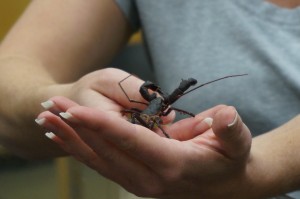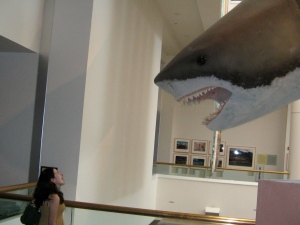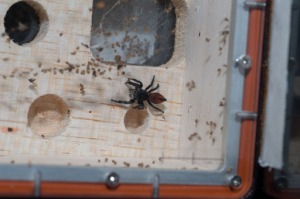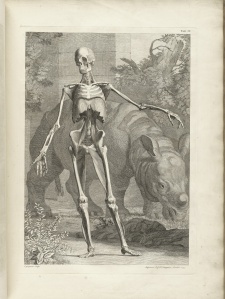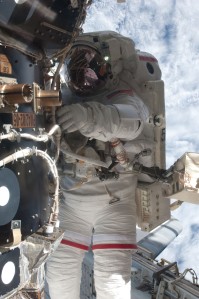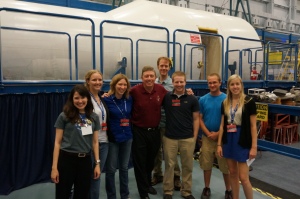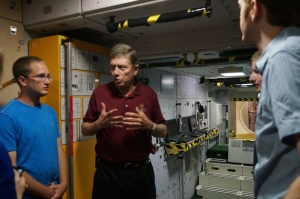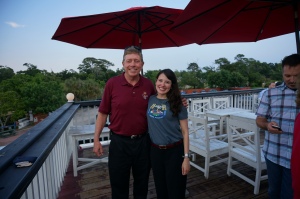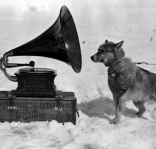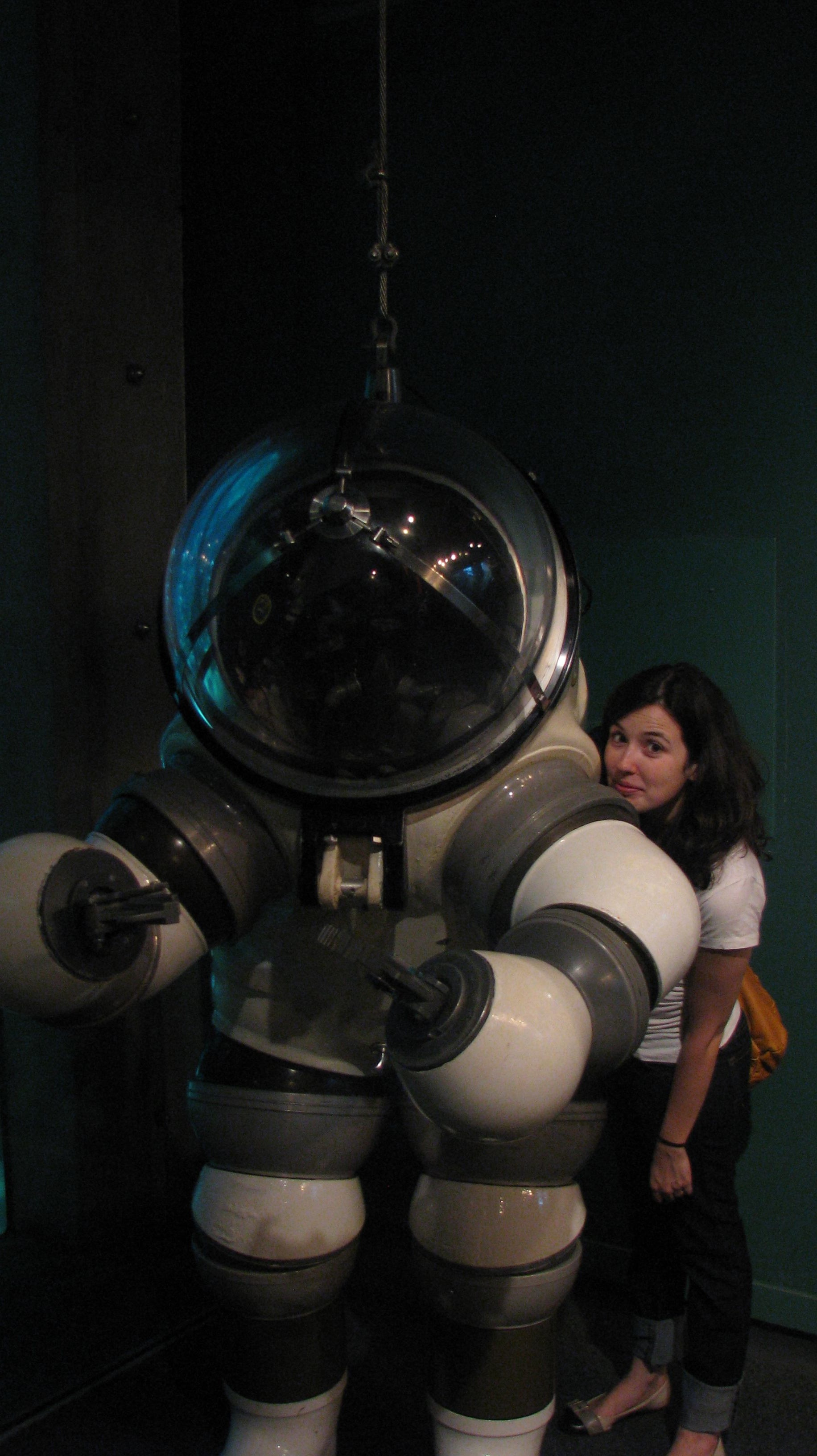Charlie Metcalf arrives at the emergency room suffering symptoms of cirrhosis. His prognosis quickly deteriorates and in less than one hour, Metcalf faces a procedure with very low chance of success. His best prospects, if surviving the procedure, would be to hope for a liver transplant. His doctor, however, warns: it is very unlikely for an alcoholic patient to receive a liver transplant.
The patient above is fictional, and is the focus of episode “Time of Death” of the medical drama ER. The story is emotional and powerful, and casts a strong impression on viewers. This is one of the reasons why Dr. Cynthia Wichelman, professor at Washington University in Saint Louis, shows this episode to the 1st year med students on her Emergency Medicine class.

ER episode “Time of Death” stars Ray Liotta as Charlie Metcalf. NBC Universal / USA Today.
Dr. Cynthia Wichelman has been teaching medicine for 17 years. Recently, she took on a new approach supported by multimedia components such as TV and online short films. I asked her on the phone what motivated her to pursue that approach: are students different now? “I do see a difference, I really do”, she says, “and it’s because back in the early 2000’s, students were not on the internet. Now, I would say that we compete for their time.” Unsurprisingly, taped lectures and powerpoint presentations won’t do it anymore. To capture the attention of a demographic with dwindling attention span, Dr. Wichelman uses storytelling, fiction and drama.
Engage and Capture Attention
TV shows such as ER, Grey’s Anatomy, or House are clearly-labeled fictional shows created to entertain. Still, they have the power to influence many. One study found that over 80% of med and nursing students watch (and are influenced by) medical dramas; other study inferred that most patients are educated about CPR via medical shows; while another believed ER helped the public become more informed about teen obesity.
The TV shows, although relevant, are far from being a precise depiction of medicine. The storylines carry inaccuracies (for example, most patients treated with CPR are young and suffered an acute trauma, as opposed to elderly patients with chronic cardiac conditions), exaggeration (in fiction, 75% of those patients survive, in contrast to 40% in the medical literature), and even absurdities (such as lungs in a box –oh wait, that one was real).
So, shows are inaccurate and both the public and early med students are buying it. Should we be concerned?
Not really, says anesthesiologist and former professor Dr. Silvana Russo (disclaimer: sister of the author). Older students, she tells, are able to pinpoint inaccuracies once they have completed a certain amount of clinical hours. Dr. Russo believes that the TV shows are invaluable tools to reach younger, inexperienced (and perhaps more easily distracted) medical students.
When she taught 1st year medical students, Dr. Russo showed movie clips where characters suffered heart attack (and later were revived by CPR). She then paused the film mid-action, while asking the class to evaluate: what’s wrong with this scene? “Find the error” was the hook used to get students engaged with the material.
Depict memorable scenarios
Back to the Emergency Medicine class, Dr. Wichelman’s aim went beyond capturing the student’s attention. She believes using a patient story (real or fictional) is a memorable way to start a lecture. In that particular ER episode, Ray Liotta’s character Charlie Metcalf explains how he resorted to “pruno”, or prison wine (a concoction that involves fruit peels, a sock, and toilet water). By watching Metcalf’s drama unfold, the young medical students learn about addict’s desperate behaviors, which is an important part of treating such patients.
The point of showing TV clips is to capitalize on the drama. For Professor Deana Midmer, “many commercial videos have highly dramatic and graphic content and are often very powerful in their depiction of the behaviors and thought processes of the movie’s characters.”
Also, Dr. Wichelman’s goal was to expose students to the pacing of an emergency room, difficult patients, emotional complications, and ethical scenarios. It helps set the stage for the clinical realities the med students are about to face.
Finally, it exposes the students to other life circumstances that they never (and perhaps never will) face. For Kevin Goodman, “[medical] dramas allow medical students to engage at an intellectual and emotional level with other people’s experiences of socially significant health issues such as poverty, domestic violence, substance abuse, and chronic and critical illness, to name a few. They mine social attitudes regarding race, class, sex, gender and ethnicity, as rich sources of dramatic conflict, and in doing so broaden the definition of health and illness to include its many social determinants.”
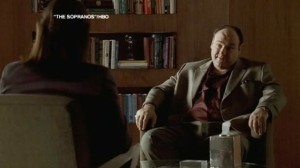
Tony soprano sees a psychiatrist. HBO / ABC news
Bringing clips to your med class
Start by choosing your clips. The literature is packed with examples. In one psychiatry class, instructors used clips from ER that portray patients symptomatic of histrionic, antisocial, borderline, and narcissistic personality disorders. They also used ER clips to illustrate how to breaking out bad news to patients (in this case the instructors used portrayals of a terminal geriatric patients, young patients with cancer, or HIV-positive young adult male). Prof. Timothy Hall (pdf), in his mental health law seminar, uses clips from TV shows such as The Sopranos (where mob boss Tony Soprano seeks psychiatry treatment for panic attacks) and a long list of films. Prof. Midmer has another list of films, as well as a few guidelines: make that clip short, and follow up with a group discussion. In the non-fiction realm, Dr. Wichelman also uses procedure videos and patient testimonials that she finds on Youtube or other sources (one example of a source is Medtube).
Above all, the use of film and TV clips in class creates a memorable, lasting impression on the future of doctors. “It is a classic teaching method in medicine”, Dr. Russo says, “the student doesn’t forget a case they see actually portrayed, as opposed to just reading about the case in a textbook.”
References:
-
-
Diem SJ, Lantos JD, Tulsky JA. Cardiopulmonary resuscitation on television. Miracles and misinformation. N Engl J Med.1996;334:1578-1582.
-
Goodman, Kevin. Imagining doctors: medical students and the TV medical drama. Virtual Mentor – American Medical Association Journal of Ethics. March 2007, Volume 9, Number 3:182-187.
-
McNeilly DP, Wengel SP. The “ER” seminar: teaching psychotherapeutic techniques to medical students. Acad Psychiatry. 2001;25:193-200.
Simultaneously posted on PLOS Sci-Ed – January 13th 2014.









